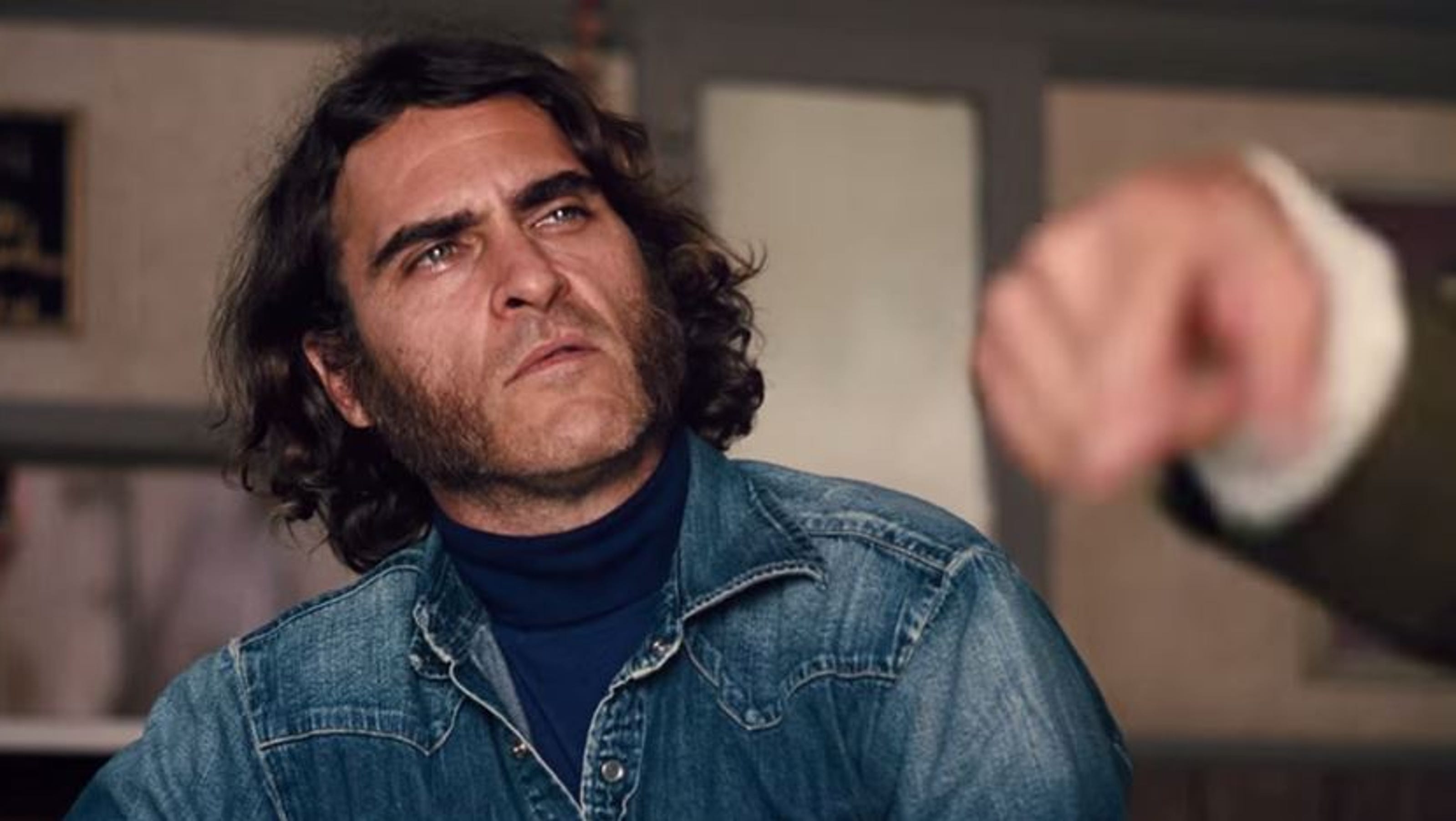A little over 15 years later Anderson has decided to dip his newer and less roving lens into the slinky sordid 70s milieu once again. Yet “Vice” is instantly more meditative and less flashy resembling in tone and atmosphere other 70’s LA detective/mystery films such as Altman’s “The Long Goodbye” and Arthur Penn’s “Night Moves.” Mutton chopped stoner hippie private investigator Larry “Doc” Sportello (Joaquin Phoenix) is confronted at his beach house by his ex-girlfriend (lovely Katherine Waterston) who invites him to take on a missing person’s case involving her former lover and real estate mogul Mickey Wolfmann (Eric Roberts).
Doc, played with unforeseen slapstick gusto by Joaquin Phoenix, takes the case, but more often engages than just observes the self-destructive, drug-fueled world of his surroundings. And along his meandering quest to find Wolfmann our pot smoking detective stumbles upon the likes of also missing jazz saxophonist Cory Harlington (wry Owen Wilson), libidinous coke snorting dentist Rudy Blatnoyd (a wonderfully sleazy but all too brief Martin Short) and most notably brusque flat-topped macho cop and sometime SAG extra Christian “Bigfoot” Bjornsen (a sublime Josh Brolin) who has a great disdain for hippies. Brolin in particular gets major props for adding pathos as well as laughs to such a seemingly broad right-wing comic creation (he has an affinity for slurping chocolate covered banana popsicles) and neatly fits the face of the Establishment that Doc constantly seems to run afoul of in his own loopy pursuit of Wolfmann.
What separates “Boogie Nights” from “Inherent Vice” most notably here though is the lack of technical virtuosity on display that defined Anderson’s earlier work. He’s always been an actor's director, even as far back as his first feature “Hard Eight” with Philip Baker Hall, but never before has he allowed a film to just be quite like he does here. The camera is more often than not completely still allowing this mostly engaging ensemble numerous attempts to energize the compositions via numerous wide shots and close-ups. As good as the cast is though the lack of cohesive narrative and abundance of endless scenes towards the film’s second half begins to become problematic for the mystery at hand. Doc finds clues and forgets them just as fast and some characters depart as quickly as they’re introduced. Most all the characters involved are missing in their own way, regretting not having taken a chance on a relationship, or another means of living, or on finding something meaningful enough to keep pursuing. The lack of urgency becomes a lack of stakes in the game and the audience can’t help but peer around rather than into well acted and composed scenes through a looking glass. Such an adept technician like Anderson shouldn’t have to film this story like a stodgy theatre adaptation but rather engage in the vivid imagination of his ardent conjuring.
Anderson made his name constructing films like “Boogie Nights” and “Magnolia” that engaged the audience to care about his dreamers but this is the first time he’s directed a fever dream of a movie that has yet to wake up.


No comments:
Post a Comment